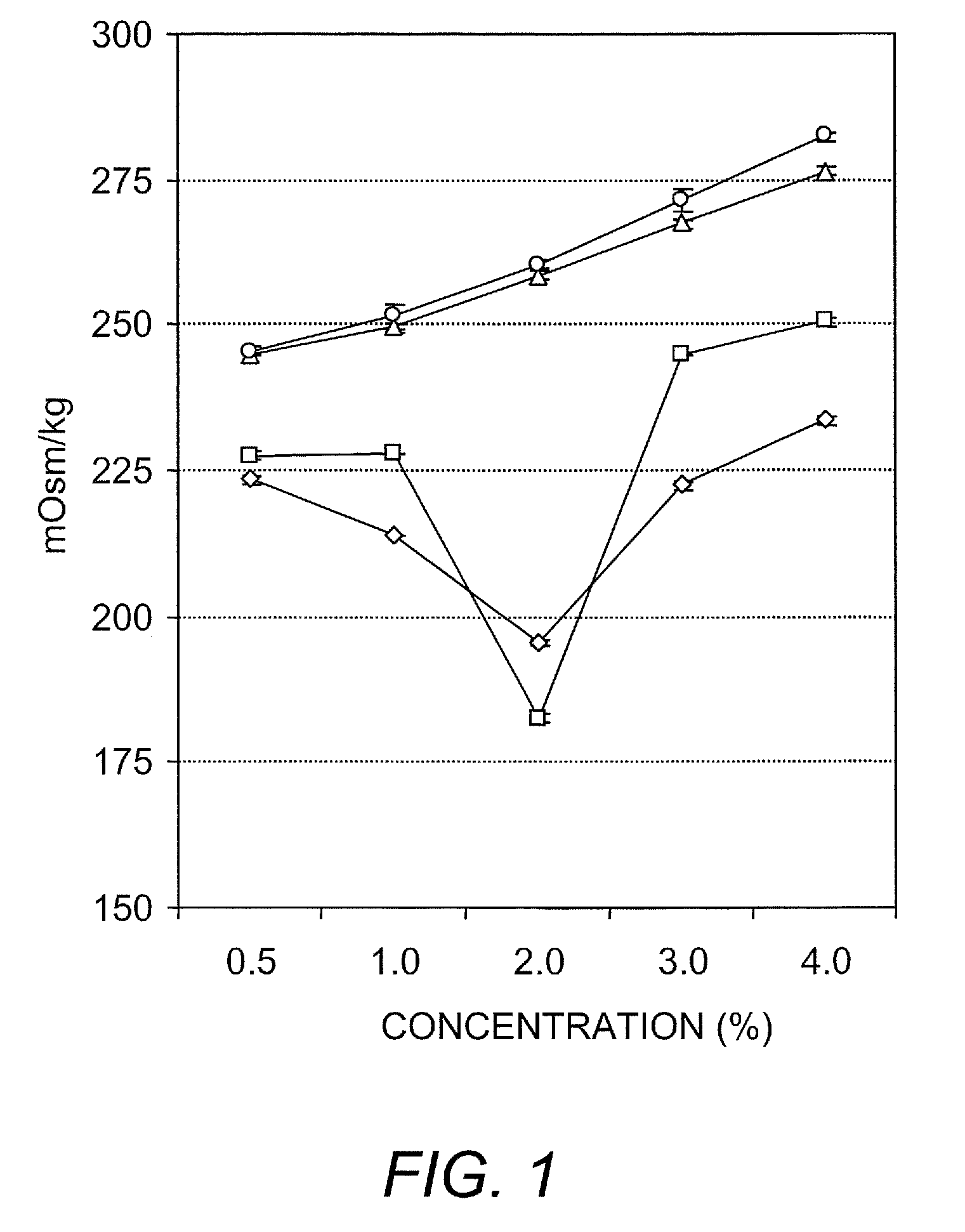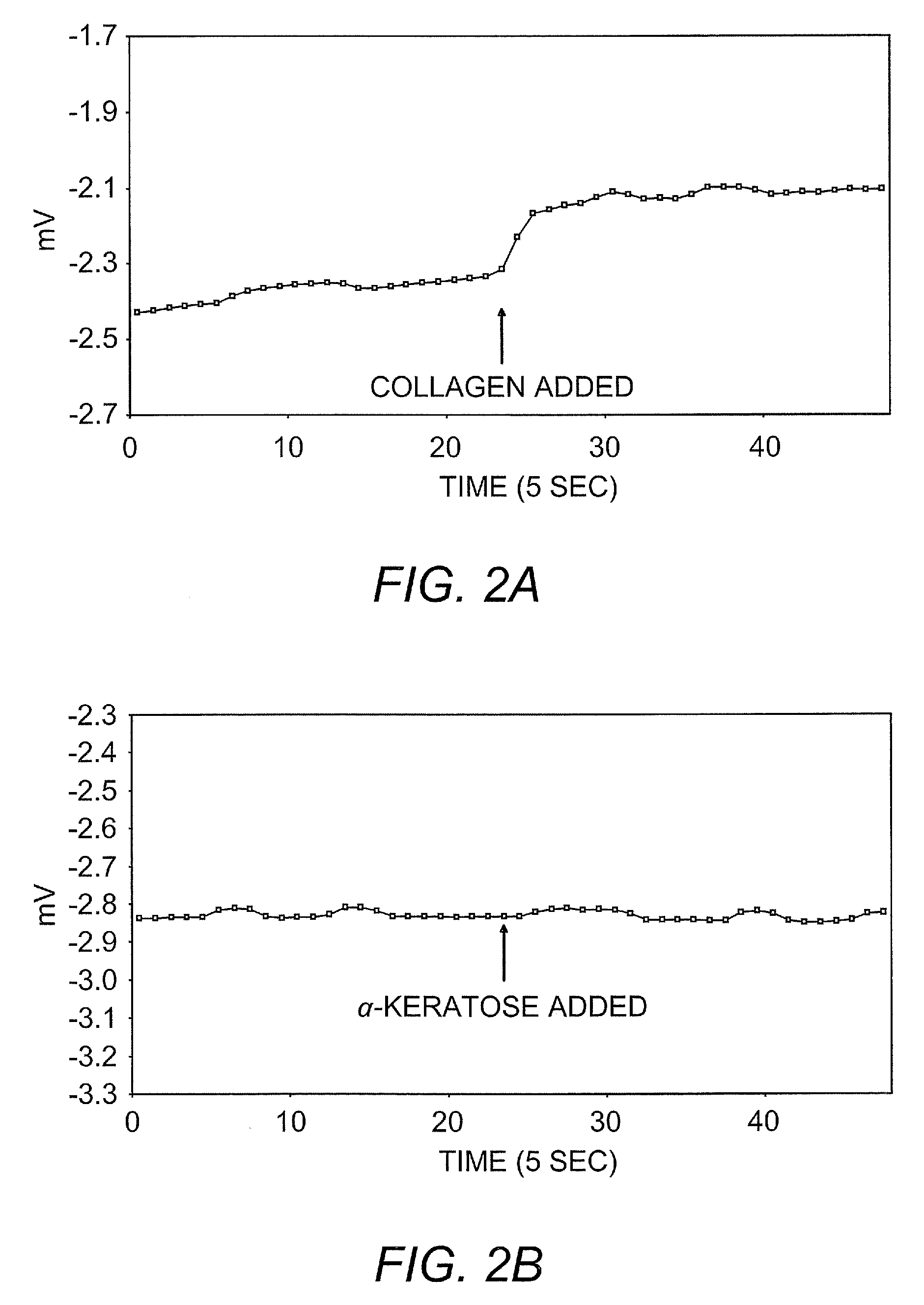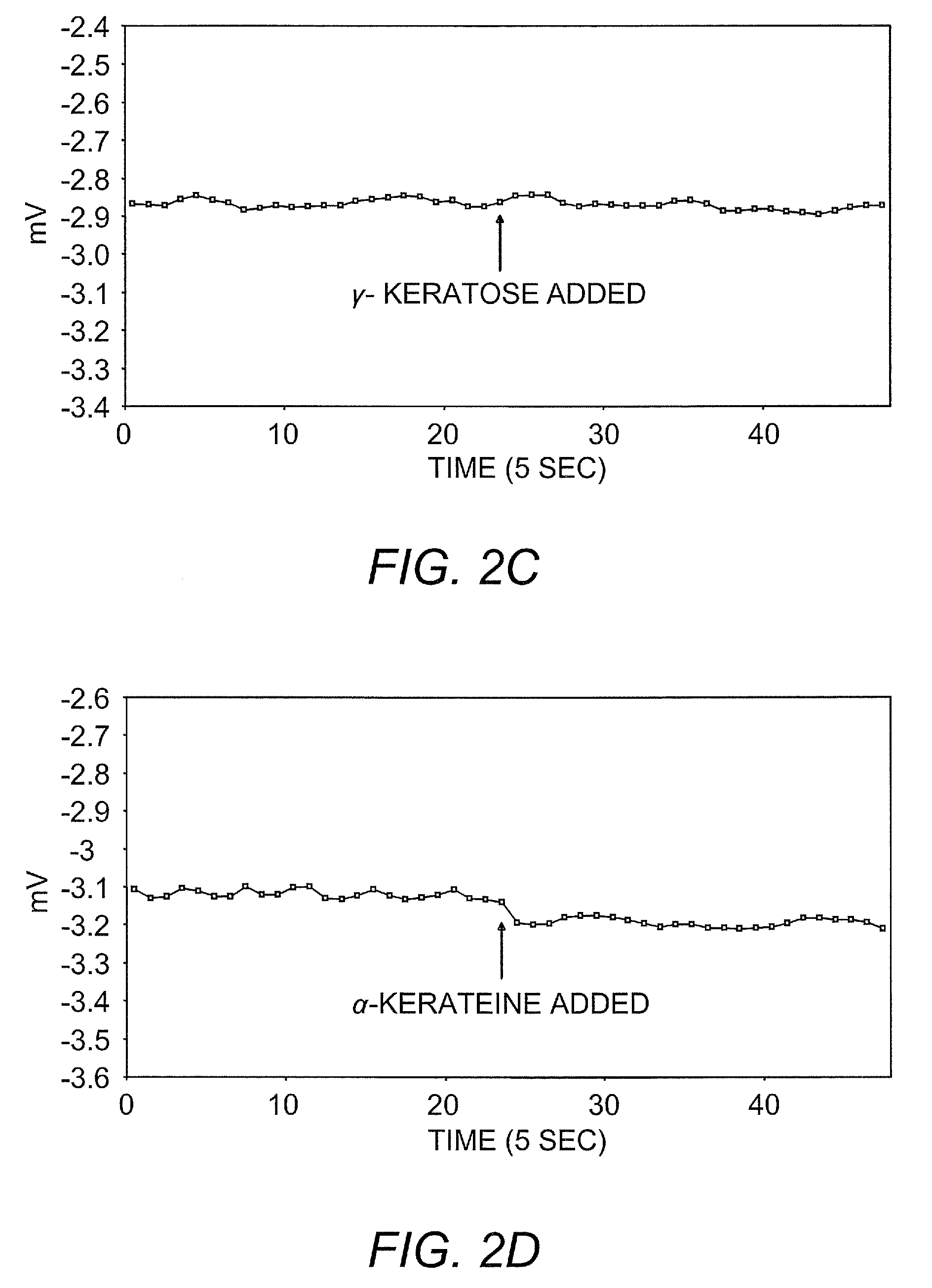Ambient stored blood plasma expanders containing keratose
a plasma expander and keratose technology, which is applied in the direction of drug compositions, biocides, extracellular fluid disorders, etc., can solve the problems of complex development of plasma expanders and/or blood substitutes, inability to predict the consequences of changing the flow properties of blood, and low blood viscosity, so as to increase the plasma volume and increase the plasma volume
- Summary
- Abstract
- Description
- Claims
- Application Information
AI Technical Summary
Benefits of technology
Problems solved by technology
Method used
Image
Examples
example 1
Production of Keratoses
[0068]50 grams of clean dried hair are oxidized using 1,000 mL of 2 weight / volume % peracetic acid by gentle shaking at 37° C. for 12 hours. The oxidized hair is recovered by sieve and rinsed free of residual oxidant using copious amounts of deionized (DI) water. The damp hair is extracted with 2,000 mL of 0.1M tris base at 37° C. with gentle shaking for 3 hours. The hair is separated by sieve and the liquid retained. The swollen hair is further extracted with 2,000 mL of DI water at 37° C. with gentle shaking for 1 hour. The hair is separated by sieve and the liquid retained. A third and final extraction of the swollen hair is accomplished with 2,000 mL of DI water at 37° C. with gentle shaking for 1 hour. The hair is separated by sieve and the liquid retained. The three extracts are combined and residual solids removed by centrifugation and filtration. The keratose solution is titrated to pH 6 by dropwise addition of acid and loaded onto a preconditioned ion...
example 2
Production of Alpha-Keratose Fraction
[0069]Alpha-keratose is isolated from the extract solution prepared in Example 1 by dropwise addition of acid until the pH of the solution reaches approximately 4.2. Preferred acids include sulfuric, hydrochloric, and acetic acid. A most preferred acid is concentrated hydrochloric acid. Precipitation of the alpha fraction begins at around pH 6.0 and continues until approximately 4.2. Fractional precipitation can be utilized to isolate different ranges of protein with different isoelectric properties. Solid alpha-keratose is recovered by centrifugation or filtration. The alpha-keratose is further purified by re-dissolving the solids in a denaturing solution. The same denaturing solutions as those utilized for extraction can be used, however a preferred denaturing solution is Trizma base (also called tris base). Ethylene diamine tetraacetic acid (EDTA) is added to complex trace metals found in hair. A preferred denaturing solution is 20 mM tris bas...
example 3
Production of Gamma-Keratose Fraction
[0070]The gamma-keratose fraction is isolated by precipitation to a water-miscible non-solvent. Suitable non-solvents include ethanol, methanol, acetone, and the like. A most preferred non-solvent is ethanol. To affect precipitation, the gamma-keratose solution can be concentrated by evaporation of excess water. After removal of the alpha-keratose, the concentration of gamma-keratose from a typical extraction solution is approximately 1-2%. This solution can be concentrated to approximately 10-20% by removal of 90% of the water. This can be done using vacuum distillation. After concentration, the gamma-keratose solution is added dropwise to an excess of cold non-solvent. A most preferred method is to concentrate the gamma-keratose solution to approximately 10% and add it dropwise to an 8-fold excess of cold ethanol. The gamma-keratose is isolated by centrifugation or filtration and dried. Suitable methods for drying include freeze drying (lyophil...
PUM
 Login to View More
Login to View More Abstract
Description
Claims
Application Information
 Login to View More
Login to View More - R&D
- Intellectual Property
- Life Sciences
- Materials
- Tech Scout
- Unparalleled Data Quality
- Higher Quality Content
- 60% Fewer Hallucinations
Browse by: Latest US Patents, China's latest patents, Technical Efficacy Thesaurus, Application Domain, Technology Topic, Popular Technical Reports.
© 2025 PatSnap. All rights reserved.Legal|Privacy policy|Modern Slavery Act Transparency Statement|Sitemap|About US| Contact US: help@patsnap.com



